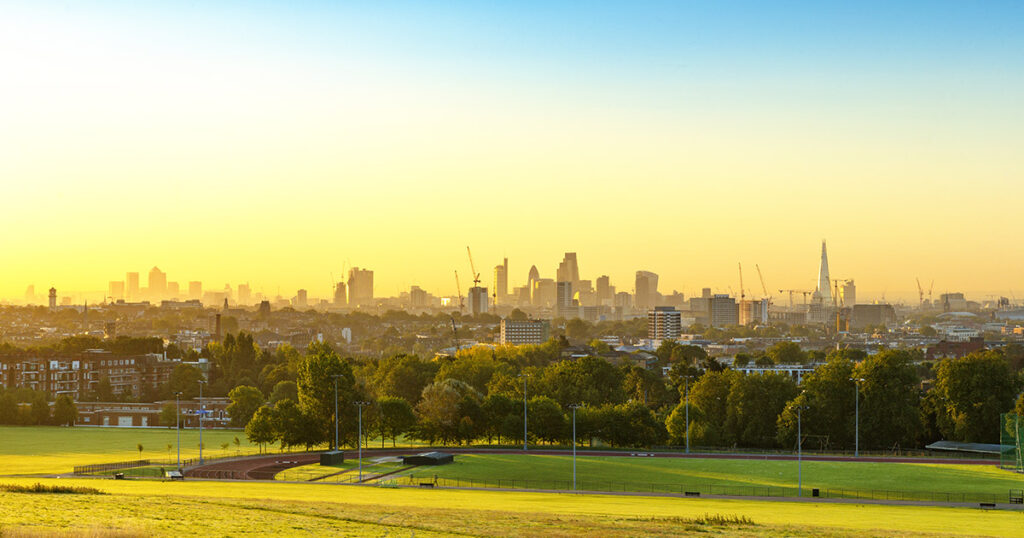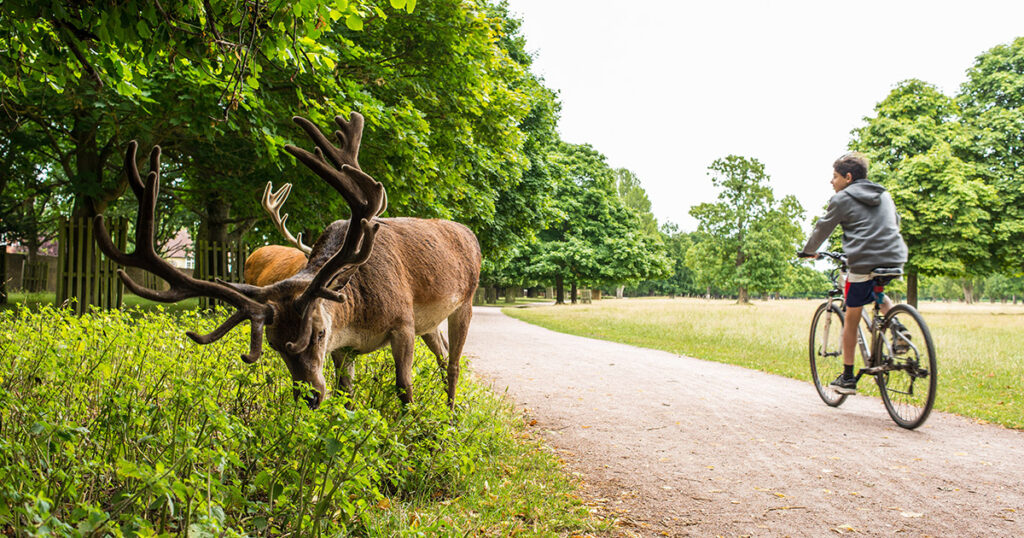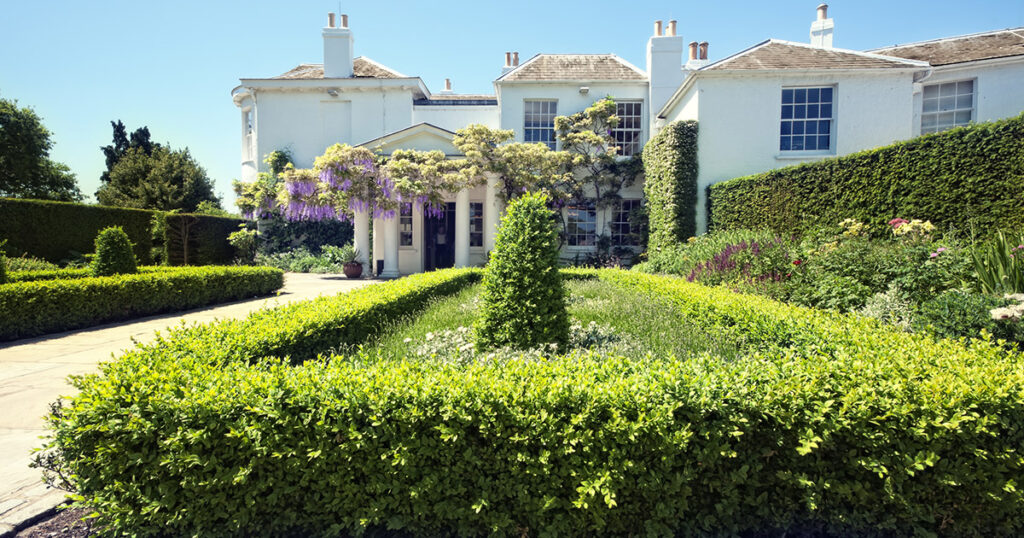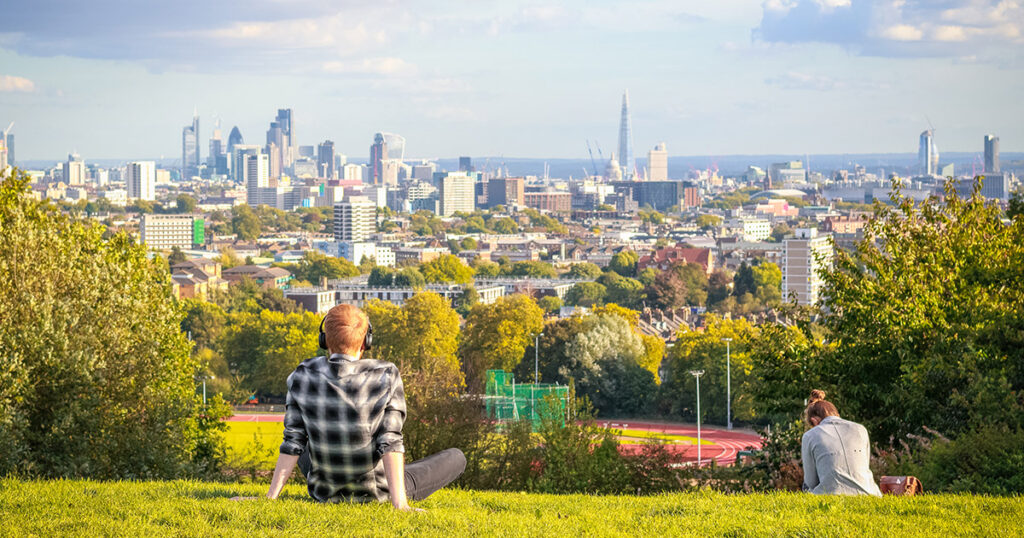Exciting city spaces all in easy reach of Hammersmith

Open spaces to explore in london
Although London is a heavily populated area there are still plenty of open spaces for you to explore Hidden all over the city and in the suburbs these oases of calm are havens for city wildlife.
On of the most impressive and very close to Hammersmith is Richmond Park. Reached by the 533 from Hammersmith and then a walk of around 20 minutes or by tube to Richmond and then the 337 it is a wonderful place to spend your day.
Favoured by Charles 1st, Richmond Palace had previously been a residence of Elizabeth 1st who died there in 1603.Charles then used the palace as a haven from the plague which broke out in London in the 1620’s and afterwards looked to extend the hunting grounds which were already in place around the Palace. A wall was built to enclosed Richmond Park in 1637 however ordinary people were still allowed to enter the park to collect firewood. Following the execution of Charles 1st in 1649 the park was run by the City of London.

Richmond Park is the second largest park in London after Lea Valley and one of the eight royal parks. It has over 650 deer which are allowed to roam free and includes the Isabella Plantation, a woodland garden which contains a cornucopia of plants from azaleas to rhododendrons. This area was developed in the early 19th century and fenced off to stop deer getting in. Today it is a popular feature of the park.
Places to eat include the impressive Georgian Tea Rooms in Pembroke Lodge and Roehampton Café. There is no charge to enter the park which is rich in flora and fauna. The Tasmin Trail which takes you around the perimeter is 7.35 miles in length.
Richmond Park is famous for its red and fallow deer.
Pembroke Lodge was at one time home to the British Prime Minster Lord Russell and White Lodge in the park is part of the Royal Ballet School. Once a former hunting lodge it has been used by younger Royal Ballet students since 1955 and is in a quiet but very attractive location.

Another impressive space not far from Hammersmith is Hampstead Heath. A wild area less than four miles from the centre of London it covers around 800 acres. It is said that this area of London inspired CS Lewis to write the Chronicles of Narnia. It is also where the artist Constable spent his final years. Over time many have fought to keep Hampstead Heath an open space. It was first mentioned back in 1543 when hunting and falconry was banned in this area by Henry VIII so that he could use it personally for hunting game. During the 19th century the area was opened up by the introduction of the railway which meant that it could now be accessed by families from most of the city including the East End. Donkey rides and fairs appear on the heath, and a number of taverns sprung up as people flocked to this very special green space.
The Heath is home to hedgehogs, moles and muntjac deer, over180 species of birds and nine types of bats. It is said the area has 650 different types of plants.
Muntjac deer are russet brown in colour but usually turn grey during the winter months. They are quite small compared with other varieties of deer and have a wide and flat tail. Males have striped faces and produce small antlers. They are very solitary creatures and usually come out at night. If you are lucky, you might spot some around the East Heath area.
To reach Hampstead Heath from Hammersmith Bus Station you should walk across to the other tube station and take the Hammersmith and District line to Great Portland Street and then the 88 buses in Albany Street to Parliament Hill Fields. It should take you around an hour to get there.

There are some spectacular views across London particular from Parliament Hill. There is a lot to explore and the area including Hampstead is very family friendly.
If you are looking for something different you should try the London Wetlands Centre which again is in easy reach Hammersmith, Less than 30 minutes from the bus station just hop on 533 and get off at Lonsdale Road, then take the 485 which is just five stops to the Wetlands Centre in Queen Elizabeth’s Walk, Barnes.
Managed by the Wildfowl and Wetlands Trust the Centre opened in 2000. Created from several small reservoirs it was the first project of its kind in the UK. Now home to a number of species that cannot be found anywhere else in this country it has over 150, 000 visitors a year. A trip here will give you the chance to see a large number of birds and if you are lucky experience their otters. On your visit you will be able to find out more about the bird of the day, learn more about the centre and how it is helping to decrease the impact of climate change. Whilst there you can also experience their observation hides and take a wild walk around the site.
Birds you might spot in the early spring include bittern, one of Britain’s rarest breeding birds, gadwall, a grey-coloured dabbling duck, widgeon and teal.
A visit here is a chance to experience wetland birds just a stone’s throw from our Hammersmith drops off point.
Quirky Fact: During World War I, Richmond Park served as a base for calvary training.


